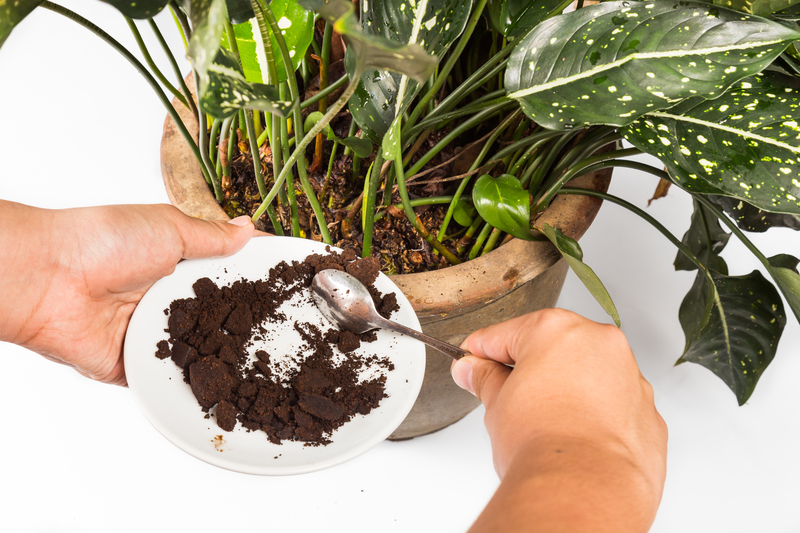Proactive Measures for Safeguarding Your Garden from Harsh Weather
Posted on 24/05/2025
Proactive Measures for Safeguarding Your Garden from Harsh Weather
Every gardener knows the unpredictable nature of weather can pose significant threats to the health, beauty, and bounty of their outdoor sanctuaries. From unexpected frosts and relentless heatwaves to torrential rains and fierce winds, harsh weather can disrupt months of toil and dedication. The good news is that with proactive measures for safeguarding your garden from harsh weather, you can minimize damage, protect your investment, and ensure a vibrant, flourishing garden all year round.
Understanding Your Local Climate and Weather Risks
An effective protection strategy starts with comprehending your region's common weather threats. Every microclimate brings its own set of challenges. Some areas contend with late spring frosts, while others battle scorching summers or powerful storms. It is essential to:
- Monitor local weather forecasts regularly
- Identify seasonal weather patterns and historic anomalies
- Take note of vulnerable zones in your garden (position, slope, drainage)
Armed with this knowledge, you can implement the right measures to safeguard your garden from extreme weather.

Choosing Weather-Resistant Plants
Selecting appropriate plants is one of the most efficient proactive measures for safeguarding your garden from harsh weather. Some varieties are inherently more resilient to wild weather swings, drought, or prolonged precipitation. Factors to consider:
- Native and Adapted Species: These plants naturally thrive in your area's conditions and require less intervention.
- Drought-tolerant options for areas with prolonged heat or little rainfall.
- Frost-resistant plants for colder climates.
- Wind-resistant shrubs and groundcovers for storm-prone regions.
By incorporating these climate-appropriate choices, you establish your garden's first line of defense against the elements.
Essential Garden Design Principles for Weather Protection
A well-designed garden rarely suffers catastrophic loss. Let's explore pivotal strategies that can buffer your outdoor space from adverse conditions:
1. Strategic Plant Placement
- Plant windbreaks such as hedges or fences to shield delicate plants from strong gusts.
- Use taller, hardier plants as natural barriers on the windward side.
- Cluster sensitive species together in more sheltered microclimates (near structures or fences).
2. Sturdy Support Structures
- Install trellises, stakes, or cages to support climbing and tall plants subject to wind damage.
- Use robust, well-anchored constructions that can withstand severe weather bursts.
3. Smart Drainage and Raised Beds
- Assess your garden's slope and soil drainage patterns.
- Build raised beds to prevent waterlogging during storms or heavy rain.
- Install French drains or gravel trenches to redirect excess water away from plant roots.
Implementing these proactive garden design concepts reduces damage and keeps your garden healthy, regardless of what Mother Nature throws your way.
Mulching: A Multi-Purpose Shield
Mulching is a simple, yet incredibly powerful technique for weatherproofing your garden. Mulch offers several protective benefits, including:
- Insulating soil against extreme temperature shifts (prevents roots from freezing or overheating)
- Retaining moisture during droughts and minimizing erosion in heavy rainfall
- Suppressing weed growth which can compete for nutrients after stress events
Organic mulches like straw, bark, or leaf mold also enrich soil structure, further boosting plant resilience. Apply a 2-4 inch layer around plants, avoiding direct contact with stems to prevent rot.
Protecting Against Frost and Freezing Temperatures
Late frosts or unseasonal cold snaps can devastate a garden overnight. Proactive cold weather garden protection steps include:
1. Row Covers, Cloches, and Blankets
- Cover susceptible plants with floating row covers, old sheets, or garden blankets when frost is forecasted.
- Use cloches or plastic bottles with the bottoms removed to insulate young seedlings.
2. Watering the Day Before a Frost
- Moist soil retains more heat than dry, offering extra root protection on frigid nights.
3. Move Containers Indoors
- Relocate potted plants to garages, greenhouses, or sheltered porches when freeze warnings are issued.
Regularly monitoring forecasts and having these supplies at hand will enable you to act fast and minimize frost-related losses.
Minimizing Heat and Drought Stress
With climate change making heatwaves and droughts more common, it's vital to take action before damage sets in:
1. Shade Solutions
- Use shade cloth, umbrellas, or homemade screens to shield delicate crops from intense sun.
- Plant deciduous trees strategically to provide dappled summer shade and winter sun exposure.
2. Smart Watering Techniques
- Water early in the morning or at dusk to reduce evaporation.
- Drip irrigation systems ensure deep, consistent soil moisture with less waste.
- Hydrate deeply but less frequently to encourage robust root systems.
3. Mulching for Moisture Retention
- As mentioned, a thick layer of mulch helps conserve soil moisture during high temperatures.
Combining these approaches helps plants survive - and even thrive - during extended dry spells or record-breaking heat.
Reducing Wind and Storm Damage
Strong winds and sudden storms can uproot plants, rip foliage, topple supports, and erode topsoil. Take these proactive steps for garden protection:
1. Windbreaks and Shelterbelts
- Hedges, wooden fences, or lattice panels buffer gardens from wind's full force.
- Plant a double row of dense shrubs or small trees along the windward side of your plot.
2. Secure Structures and Supports
- Regularly check and reinforce trellises, bean teepees, or cages.
- Stake top-heavy or vining plants early in the season to avoid uprooting.
3. Erosion Control
- Use groundcovers, grass paths, or mulched areas to stabilize soil.
- Construct low berms or swales to intercept and redirect runoff during heavy rain.
Don't forget to remove weak branches or debris from nearby trees that may fall or cause damage in high winds.
Safeguarding Your Vegetable Garden
Vegetable gardens - especially those featuring tender annuals - can be particularly vulnerable to weather extremes. For specialized vegetable garden protection:
- Install cold frames or mini greenhouses for year-round growing and frost protection.
- Row covers and hoop tunnels guard against both chilling and pests.
- Practice succession planting to spread your harvest risk.
- Grow a diverse mix of crops to avoid total crop failures.
By diversifying and shielding your edible plants, you ensure a steadier supply of homegrown produce, no matter the weather.
Maintaining Your Garden's Health and Resilience
One of the best proactive measures is simply maintaining plant health, which builds inherent resistance to all forms of stress:
- Feed soil with compost or organic matter to nurture hearty root structures and robust immunity.
- Monitor for pests and diseases, which often strike stressed or damaged plants first.
- Prune promptly and wisely to encourage good airflow and structure.
A flourishing, well-cared-for garden will always be in the best position to rebound quickly after weather-related challenges.
Long-Term Proactive Measures: Planning and Investing for the Future
Garden protection is not just about reacting before or during a weather event. Consider these longer-term, big-picture investments:
1. Install a Greenhouse or Polytunnel
- Greenhouses provide year-round growing and high-level weather protection for both ornamentals and vegetables.
- Polytunnels shield large areas at a lower cost.
2. Collect Rainwater
- Set up barrels or tanks to capture rainfall. This ensures a water supply for dry spells and reduces runoff/erosion.
3. Landscape with Resilience in Mind
- Use permeable paving, terraces, and slopes to manage rainwater and reduce erosion risks.
- Plant at different heights and densities to break wind and slow water movement.
While these strategies may require more investment upfront, they pay off through improved garden health and lower maintenance in the long run.
Emergency Preparedness: Being Ready for Unpredictable Extremes
Despite all efforts, sometimes weather turns disastrous. Having an emergency garden protection plan ensures fast and effective response:
- Assemble an emergency kit: stock row covers, stakes, sandbags, and tarps for rapid deployment.
- Establish clear paths for quick access to your most valuable or vulnerable plants.
- Document your garden layout so you can quickly identify and check high-risk areas during or after a storm.
A calm, prepared response minimizes panic and damage when the unexpected occurs.

The Role of Technology in Garden Weather Protection
Modern tools can enhance your garden's resilience:
- Use smart weather sensors to provide real-time updates and alerts.
- Install automated irrigation for timely, efficient watering during dry conditions.
- Monitor soil moisture and temperature remotely via smartphone apps.
Embracing technology helps you make informed decisions and act quickly when harsh weather looms.
Conclusion: Nourish, Protect, Thrive
Safeguarding your garden from harsh weather is an ongoing, multi-layered process that rewards vigilance and foresight. By understanding your climate, selecting appropriate plants, investing in robust design, and staying prepared, you can turn weather adversity into an opportunity for growth. Remember:
- Weatherproof with mulch, smart plant choices, and windbreaks.
- Use covers and watering strategies proactively during extremes.
- Plan and adapt your garden for the long haul.
Whether you are a seasoned gardener or just beginning your horticultural journey, these proactive measures will help you protect, nurture, and enjoy your garden - regardless of what the weather brings.

